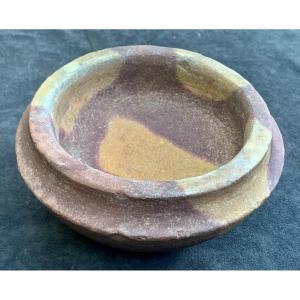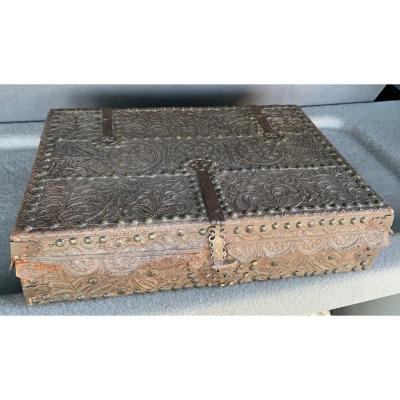Romanesque period (13th or 14th century)
Exceptional and stunning limestone carved corner gargoyle depicting a curious dragon with a lion's head (referring directly to the medieval fantasy bestiary); The mouth of the dragon opened through which the rainwater was to come out, reveals its menacing fangs. The gargoyle, semi-seated and semi-lying, is arranged in an L-shape, and its claws like a raptor, enclose a cylindrical tube.
The groove to channel rainwater is spared in the back of the monster.
Condition is just incredible, with very little wear, as if this architectural element had never been mounted on a building and in contact with external weather elements. No visible traces of sealing.T
Last owner has nevertheless cleaned it recently, fortunately without damaging the surface of the stone and its fine caved details on the surface of the monster (grooves, curves of mane and skin of the dragon)
Note only a slight shock (recent) on the base of the gargoyle, visible on the photos.
Sizes 80 (length) *56 (large) *23cm (high)
Weight approx 80 / 90 kg
"Etymologically, the word gargouille comes from the Greek gargareôn meaning "throat" and "gouille" from the old French goule: " mouth". It was in 13th century that the first gargoyles appeared. They were only simple wide gutters, made up of two parts: one serving as a channel and the other as a cover. Subsequently, the architects multiply them, in order to divide the waterfalls.They then become real decorative elements.They represent animals, mythical creatures, chimerical beings, frightening anthropomorphic creatures or humans with an obscene or amoral attitude. Gargoyles had a triple function. Firstly, their practical function as a gutter ensuring the evacuation of rainwater in small streams, far from the surrounding walls of buildings, thus avoiding undermining the integrity of the walls. Their second function was decorative. Their third function was symbolic. They played an apotropaic role in warding off evil. Their menacing aspect, their grimaces and their ferocity were intended to chase away evil. They thus protected the churches while warning the faithful against temptations from the outside..."
Transport by shipping company, on pallet
Please check my next Proantic ads for another romanesque stone carved gargoyle, much more imposing, and from same collection (last photo)


















































 Le Magazine de PROANTIC
Le Magazine de PROANTIC TRÉSORS Magazine
TRÉSORS Magazine Rivista Artiquariato
Rivista Artiquariato